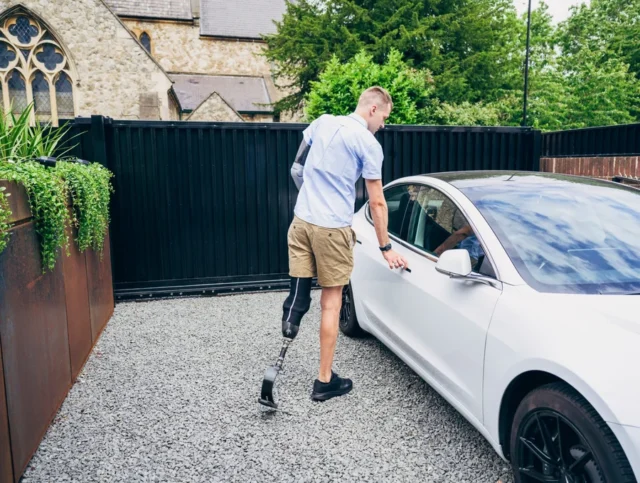Driving as an Amputee
Life after amputation can come with numerous challenges, and one aspect that often concerns people is how it might affect their ability to drive. However, driving as an amputee is not just a possibility, but something that many people do successfully and safely every day.
Understanding the impact of amputation on driving
The implications of amputation on an individual’s driving ability can vary greatly, depending on the type and level of amputation.
Upper limb amputations can influence the ability to steer and control the vehicle, while lower limb amputations can affect how an individual operates the pedals. Yet, with the right adaptations and approach, amputee driving is entirely feasible and allows individuals to regain their driving independence.
Legal considerations
The DVLA (or the DVA in Northern Ireland) in the UK stipulates that drivers must inform them of any health condition or physical change, such as an amputation, which might impact their driving abilities.
Following this notification, the DVLA may perform an assessment or request medical reports to determine if any restrictions should be imposed on the driver’s licence.
The primary aim here is to balance individual independence with the safety of all road users. It’s vital to note that failing to disclose an amputation to the DVLA can lead to fines and the potential invalidation of insurance.
Driving aids and car adaptations for amputees
Advancements in technology have resulted in a broad range of driving aids and car adaptations for amputees, designed to improve the driving experience and maintain independence. Let’s look at some options.
Hand controls
For individuals with lower limb amputations, hand controls can be a game-changer. These adaptations allow drivers to operate the brake and accelerator using their hands, enabling them to maintain control over the vehicle’s speed and stopping power, without the need for foot movement.
Steering aids
Steering aids enable the one-handed operation of a vehicle’s steering wheel; these simple adaptations are often used in conjunction with hand controls.
Left foot accelerator
In the case of a right leg amputation, a left foot accelerator can be installed. This adaptation allows the left foot to control the car’s acceleration.
The road ahead
Adapting to driving after amputation can seem daunting at first, but with proper planning, the right adjustments, and continuous support, you can successfully take back control of your driving independence. Regular health checks and a proactive approach to driving assessments will ensure you’re safe and confident on the road.
Remember, every person’s journey with amputation is unique. Therefore, the process of adapting to driving as an amputee will vary from person to person. Driving aids and adaptations can be tailored to fit your specific needs, ensuring that you retain as much driving independence as possible. It’s essential to explore the options available to you and find the combination of adaptations that best suits your situation.
Facing the prospect of driving as an amputee can feel challenging. However, it’s crucial to remember that you’re not alone on this journey. There’s ample support available, and the continual advancements in technology are making the experience of amputee driving ever more manageable.
More like this

Accessible travel
The Best Cars Currently Available On The Motability Scheme
The Motability Scheme is fantastic for disabled people, providing them with the opportunity to lease a brand-new car using their qualifying Mobility Allowance. With so many…

Accessible travel
The Future of Electric WAVs: Overcoming Challenges & Embracing Accessibility
Discover the challenges of Electric Wheelchair Accessible Vehicles (eWAVs) and how our innovative adaptations are paving the way for accessible EVs today. Explore our insights into…

Driving with adaptations
Cost-Effective and Reliable Driving Aids for Amputees: Our Recommendations
Life after limb loss and amputation doesn’t have to mean the end of driving. Although it can affect your mobility and driving ability, there are a…